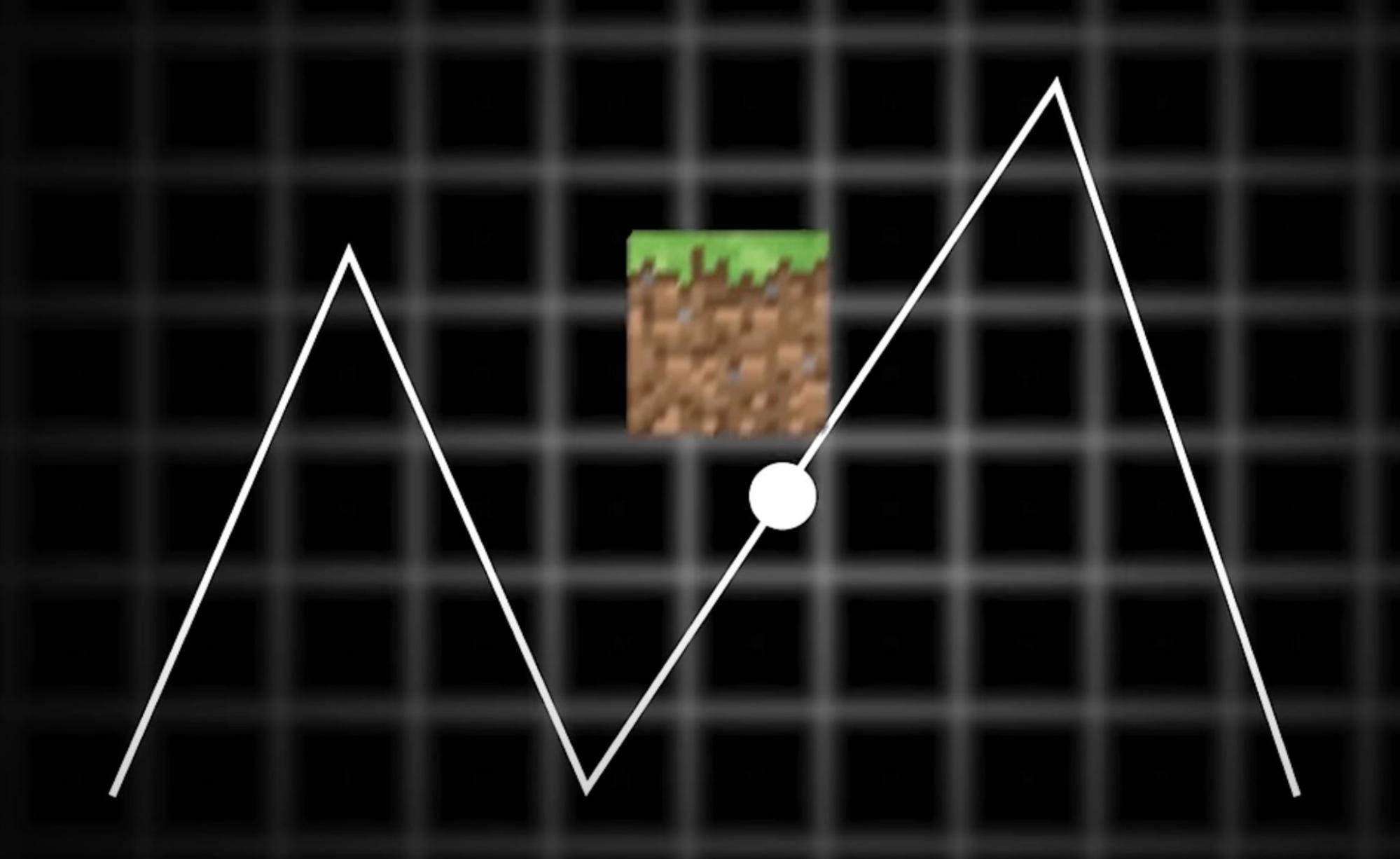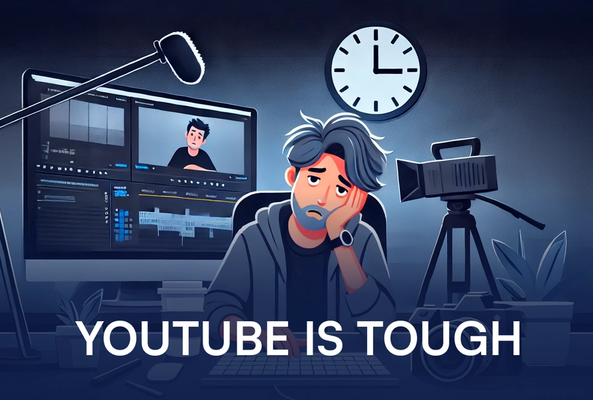Darryl is a writer with years of experience in online video software, combining technical expertise with a passion for educating audiences. When not writing, he’s tending to his farm surrounded by horses, chickens, dogs, and somehow cramming more plants into his garden than it could ever reasonably hold.
Do YouTube Niches Disappear?
When starting or growing a YouTube channel, the pressure of choosing a niche can create multiple questions: Will my niche disappear over time? Is it worth committing to a specific niche, or do these niches come and go like fleeting trends? Do I even need a niche?
Read More: The 54 Best YouTube Niches, According to Viewers
Why You Need a Niche on YouTube
First, let's address the importance of having a niche on YouTube. A niche allows you to:
Stop Guessing. Start Growing.
Join 20M+ creators using vidIQ to get more views, subscribers, and success on YouTube.
- Target a specific audience.
- Build authority in a particular field.
- Create content that resonates deeply with viewers.
Niches help you stand out in the crowded YouTube landscape by giving you a clear identity and purpose. But what happens when the niche you choose starts to lose momentum? Do you abandon it and jump to something new, or can you adapt and evolve?
The answer is nuanced. Niches do change over time, but they rarely disappear completely. Instead, they often transform, shrink, or shift in focus. Recognizing these changes early and evolving your strategy is the key to staying relevant.
How to Stay Ahead of the Curve and Maintain Your Audience
Niches can come and go, but not always in the way you might think. Some niches explode in popularity for a short period, then settle into a smaller, more dedicated audience. Others fade dramatically but never truly vanish.
So, how do you stay ahead of the curve while remaining true to your target audience? Here are some strategies that successful creators use:
1. Commit Passionately to Your Niche
Choose a niche you genuinely enjoy. Passionate creators are more likely to keep their audience engaged during slow periods by finding unique ways to innovate and create fresh content. This passion helps you adapt when trends shift.
2. Serve the Hardcore Audience
When a niche cools, casual viewers often leave, but a core audience remains. Tailor your content to this loyal group by diving deeper into niche-specific topics or exploring sub-niches.
3. Pivot and Expand Thoughtfully
Creativity and flexibility are vital. Many creators successfully pivot within their niche or expand to adjacent niches to attract new viewers while keeping their existing ones.
4. Spot Trends and Adapt
Sometimes, trends emerge inside your niche or from outside influences that you can incorporate. For example, “expensive vs. cheap” comparisons tend to perform well across many niches because they tap into universal human curiosity. Spotting trends and adapting them to your niche can help revitalize your content and draw in fresh audiences.
Action Item: Use vidIQ’s Trend Alerts tool to keep updated on new trends.
The Evolution of YouTube Niches: Examples and Insights
Let's explore a few specific niches and how creators have navigated their evolution:
Fidget Spinners and Beyond
Remember when fidget spinners were everywhere? They dominated YouTube for a period, but then interest declined. However, creators who understood the underlying audience’s interests evolved their content. Some shifted focus to similar “fidget toys” or collectibles like Tech Decks and Poké Balls, maintaining relevance by expanding the niche umbrella.
Other examples include creators moving into DIY stress-relief crafts or ASMR fidget videos, where the focus was less on the toy itself and more on the sensory experience. These creators thrived by redefining their content under broader categories like “stress management” or “fun desk accessories.”
This highlights an important lesson: your niche might be broader than you think. Instead of focusing solely on fidget spinners, consider larger categories.

Minecraft’s Ups and Downs
Minecraft is a prime example of a niche with peaks and valleys. Over the years, its popularity has fluctuated dramatically. Yet, creators who stayed committed and adapted their content, whether through new game modes, challenges, or storytelling, have remained relevant.
Creators like Grian, who emphasize architectural builds, or players who focus on speedrunning or hardcore survival, demonstrate the power of micro-niches within the larger Minecraft community. Some even transitioned into education, teaching coding and design concepts through Minecraft’s framework.
This persistence shows that niches can have long lifespans if you evolve with the community’s interests.
Travel and Van Life
The travel niche, particularly van life, saw a surge during the pandemic when international travel was limited. Creators who focused solely on the initial van life boom might have felt the audience shrink afterward. But those who pivoted—such as upgrading their vans, exploring new destinations, or integrating RV travel—managed to keep their audience engaged.
Others expanded into sub-niches like “off-grid living,” “eco-friendly travel,” or “tiny home lifestyle,” tapping into overlapping audiences interested in sustainable or minimalist living.
The key takeaway here is that niches are fluid, and creators must be ready to grow alongside their audience.
Cosmetics and Beauty
Eight years ago, makeup tutorials exploded on YouTube, creating a massive niche. As the beauty community matured, creators had to innovate to maintain relevance. Some focused on specific skin types or age groups, while others specialized in natural methods or sustainable products.
Newer sub-niches also emerged, such as creators focusing on budget-friendly beauty (e.g., “Dollar Store Makeup”), hyper-niche tutorials (e.g., “makeup for cosplay”), or even scientific approaches to beauty, debunking myths and analyzing product ingredients.
This kind of niche segmentation helps creators connect with new sub-audiences while retaining their core viewers.

Understanding Your Audience’s Evolution
One of the most fascinating aspects of niche longevity is how your audience evolves. People don’t just suddenly stop being interested in a topic. Instead, they often shift their interests or replace one passion with a related one.
This gradual evolution means your content should also evolve to match the changing tastes of your viewers, so you produce the exact videos that they want to see.
Think of your niche as a living ecosystem. Your audience grows, matures, and sometimes changes direction. Your job as a creator is to study these shifts closely and adapt your content accordingly. This ongoing process ensures you remain relevant and valuable to your viewers.
Tips to Future-Proof Your Niche Strategy
- Monitor Trends: Use tools like Google Trends and vidIQ’s Most Viewed tool to spot changes early.
- Engage Your Audience: Listen to feedback and observe evolving interests.
- Experiment Creatively: Try new formats or collaborate with creators in adjacent niches.
- Expand Thoughtfully: Identify broader themes that align with your core content.
- Stay Passionate: Enthusiasm keeps your content authentic and engaging.
Embrace the Evolution of Your Niche
Do you need a niche on YouTube? Absolutely! It’s a cornerstone of building a focused, engaged channel. And while niches may not disappear from YouTube, they evolve and offer opportunities for creators willing to innovate. Whether riding the wave of a trending topic or deepening your connection with a loyal core audience, your niche journey should be ongoing.
Stay curious, stay flexible, and most importantly, stay true to your passion. That’s the key to thriving on YouTube in the long run.
Look here for help on how to choose a niche for your YouTube channel.
FAQs
Do you need a niche on YouTube to succeed?
Yes, having a niche helps you attract a specific audience, establish authority, and stand out in the crowded YouTube space. While it’s possible to grow a generalist channel, focusing on a niche makes it easier to build a loyal and engaged community.
What should I do if my niche starts losing popularity?
If your niche slows down, analyze trends to identify shifts in audience interests. Consider diving deeper into sub-niches, targeting a hardcore audience, or pivoting to adjacent niches while staying true to your overall theme. Passion and adaptability are key to navigating these changes.
Can I combine multiple niches on my channel?
Combining niches can work if they share overlapping audiences or themes. For example, pairing travel content with sustainability tips can attract viewers interested in both. Just make sure your channel maintains a cohesive identity to avoid confusing your audience.
20k+ 5 Star Reviews
Ready to put this into action?
Use vidIQ to find your next video idea, pick better keywords, and optimize every upload.






